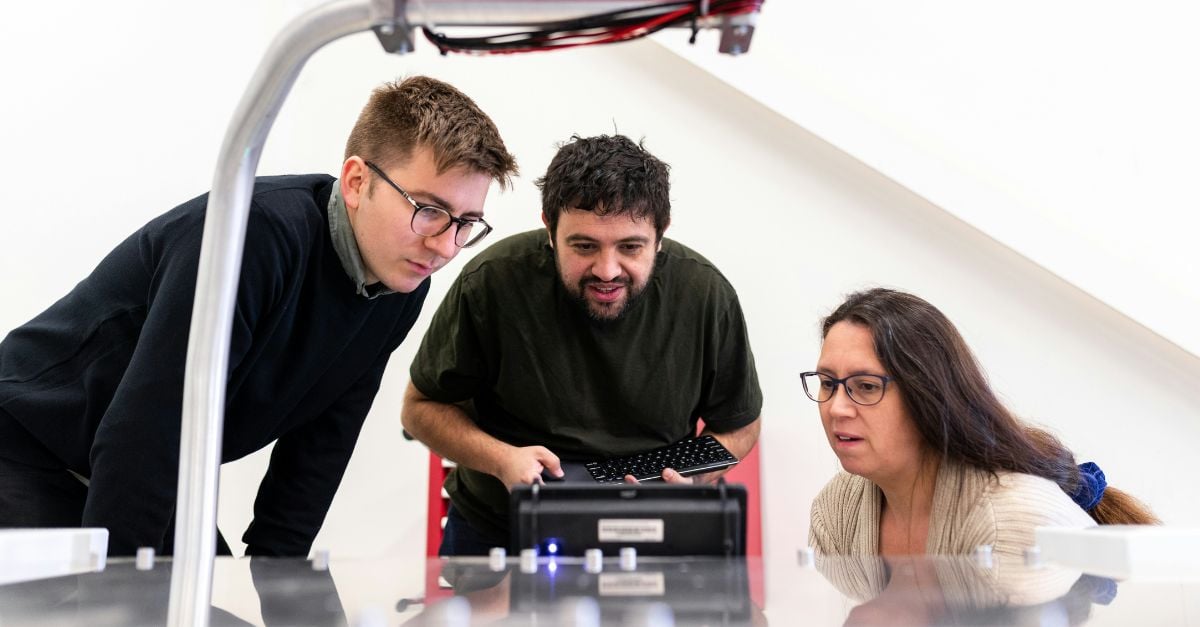4 min read
Google Cloud Trends: Our Predictions for 2024
Artificial intelligence (AI) and generative AI are top of mind for most businesses these days, and for good reason. Mounting evidence shows the...
As technology evolves at an unprecedented pace, organizations need to keep their applications updated and relevant to remain competitive.
By investing in application modernization, teams can remain up-to-date with their competitors and stay relevant in their industry while developing a strategy that keeps them agile.
When paired with the outstanding service and support from Promevo, your app modernization strategy can be streamlined, innovative, and designed for the future.
An application modernization strategy is a comprehensive plan for organizations to modernize their software products and services, which may have become outdated due to the rapid advancements in technology.
The process involves upgrading, replatforming, or re-architecting existing software applications to use state-of-the-art technology, making the systems safer and more scalable.
Several factors drive the need for a modernization strategy, including the emergence of new technologies, cost optimization, maintenance of legacy systems, and user experience improvement.
A well-executed strategy can save companies valuable resources and ensure they remain competitive in the ever-evolving digital landscape.
Having a modernization strategy is crucial for organizations looking to keep up with the pace of technological advancements. Here are some reasons why:
The first component of an application modernization strategy is assessment, which allows organizations to analyze their software infrastructure and determine the extent of modernization needed.
This step should involve working with experts who know what features to look for to outline a modernization strategy.
Some common tools for conducting an application modernization assessment include:
The next step in the app modernization process is to plan and evaluate your path to modernization.
Before embarking on a modernization journey, organizations must establish clear goals and objectives that align with their business strategy. Goals can include cost optimization, reduced maintenance, improved user experience, or increased agility.
By setting these goals upfront, organizations can prioritize modernization efforts and ensure alignment across the company.
Once goals and objectives have been established, organizations must develop a modernization roadmap outlining the technical and functional improvements needed to achieve desired outcomes.
A roadmap includes specific milestones and timelines, ensuring every phase of the modernization process is captured and communicated.
When you partner with Promevo, our technical experts will create this roadmap for you and set realistic, accurate benchmarks for assessing success along the way.
As part of the planning phase, teams must identify the resources, technologies, and tools required for modernization. This includes estimating human capital, budgets, infrastructure, and timetables for completing various tasks.
Before Promevo executes your app modernization plan, we'll create a clickable prototype for delivery so you know exactly what you're receiving. Then, it's time to begin this step in the process.
The execution stage of an application modernization strategy involves implementing the modernization plan, managing risks during the process, and adhering to best practices to ensure a smooth transition.
Here are some key steps to follow during the implementation phase:
Managing risks throughout the modernization process is crucial to ensure a successful transition. Some common risks during an application modernization project include:
To manage these risks:
An effective application modernization strategy can bring numerous benefits to an organization, including:
Application modernization can lead to better user experiences by leveraging advanced technologies, such as AI and machine learning, to provide personalized and relevant content.
Additionally, modernized applications can help improve customer satisfaction through faster response times, reduced downtime, and seamless integration across platforms and devices.
Modern applications can help businesses become more agile and flexible by allowing them to adapt to changing market conditions and customer expectations more quickly.
With a modern application stack, organizations can easily scale their operations, introduce new features, and respond to emerging trends.
Modern applications are generally more secure than their legacy counterparts, as they leverage advanced security features and are built on up-to-date platforms.
Application modernization can help organizations protect their valuable data and reduce the risk of security breaches or compliance issues.
Modernizing your applications not only eases the maintenance process but also opens the door to numerous technical benefits that could shape your organization's future. Let's dive into the specifics of these advantages.
One of the most significant benefits of an application modernization strategy is improved scalability. Legacy systems tend to become increasingly difficult to scale due to monolithic structures and tight coupling between components.
By modernizing your applications, you adopt a more modular and flexible approach that eases the scaling process, allowing you to grow and adapt to changing business needs.
For example, moving toward a cloud-native architecture or adopting microservices can significantly restructure your existing applications, making them more scalable and well-suited for handling varying workloads. Ultimately, this can lead to enhanced efficiency, decreased costs, and better performance.
Legacy systems often struggle with integration because of outdated technology and the inability to communicate with modern solutions.
Modernizing applications can help enable better communication between different software systems, tools, and APIs, leading to improved functionality and streamlined workflows.
For instance, modern APIs can provide seamless connections between your applications and data from diverse sources, eliminating the need for complex integrations and manual data manipulation.
With greater integration capabilities, you expand your options and access advanced features without losing the flexibility to develop and innovate in the future.
Technical debt is the cost of deferring necessary upgrades or fixes to a system, which often increases with the age and complexity of legacy applications.
An effective application modernization strategy helps you tackle and reduce technical debt by addressing outdated technologies, security concerns, and performance bottlenecks, ultimately leading to a more simplified and well-managed IT ecosystem.
Avoiding this buildup of technical debt not only makes it easier to maintain and troubleshoot applications but also prevents expensive, time-consuming overhauls. This results in a more agile work environment and allows your team to allocate resources to more strategic, forward-looking projects.
Legacy applications tend to suffer performance-related issues due to antiquated technology, architecture, or both.
Application modernization can deliver significant performance improvements, leading to shorter response times, increased throughput, and overall enhanced user experience.
For example, transitioning from legacy infrastructure to the cloud can help leverage the latest technology and services to significantly improve application performance. Faster, more reliable performance not only benefits end-users but also contributes to overall organizational efficiency.
If it's time to modernize your applications, look to the experts at Promevo. Promevo provides end-to-end development of powerful apps that utilize the best new architecture and technologies on the Google Cloud Platform, including microservices and APIs, UX architecture, and more.
As your app modernization partner, Promevo will:
If you're ready for a digital transformation, take advantage of our decades of experience in deconstructing monoliths. Contact the Promevo team today.
Application modernization refers to the process of updating and transforming older, legacy software applications to improve their overall performance, functionality, security, and maintainability.
Modernization helps keep applications relevant, efficient, and compatible with the ever-changing technology landscape.
It enables organizations to remain agile in the face of changing business needs, reduce technical debt, and maximize resources.
Some popular strategies include rehosting (lift and shift), refactoring, rearchitecting, rebuilding, and replacing. The choice of strategy will depend on an organization's goals, resources, and current application landscape.
The duration of the modernization process depends on the complexity of the project, the chosen strategy, and the organization's resources. It can range from a few weeks to several months or even years for large-scale projects.
Meet the Author
Promevo is a Google Premier Partner for Google Workspace, Google Cloud, and Google Chrome, specializing in helping businesses harness the power of Google and the opportunities of AI. From technical support and implementation to expert consulting and custom solutions like gPanel, we empower organizations to optimize operations and accelerate growth in the AI era.

4 min read
Artificial intelligence (AI) and generative AI are top of mind for most businesses these days, and for good reason. Mounting evidence shows the...

5 min read
If you’re tasked with overseeing your company's cloud environment or digital transformation, you might see these buzzwords come up fairly often:...